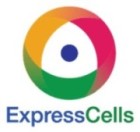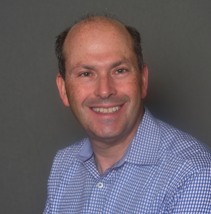
© CEOCFO Magazine -
CEOCFO Magazine,
Phone: 727-
Email: info@ceocfocontact.com


Search





Lynn Fosse, Senior Editor
Steve Alexander, Associate Editor
Bud Wayne, Editorial Executive
Christy Rivers -
Valerie Austin -






 Print -
Print -
ExpressCells: Genetically-
 Matthew Handel
Matthew Handel
Chief Executive Officer
ExpressCells
Contact:
(484) 483-
Interview conducted by:
Lynn Fosse, Senior Editor
CEOCFO Magazine
Published – March 23, 2020
CEOCFO: Mr. Handel, what was the vision when you started ExpressCells? Where are you today?
Mr. Handel: When we started ExpressCells it was two of us; myself and Oscar Perez-
Our vision was to create a company that could be small, that could take a technology that looks very promising, and quickly convert it into something that allowed us to sell to customers and to help them prove their own experiments. We formed the company in September of 2018, just two people with a plan. It took about a year to get fully funded and here we are five months later, after funding. We have a fully operational company. We have an operating lab. We have a staff. We are commercializing our product and it is just amazing to see everything that the team has been able to accomplish, really in a very short period of time!
CEOCFO: Would you tell us about your product line?
Mr. Handel: We are a genetic engineering company, but like I said, we are not focused on therapeutics. We are creating knock-
Our first products are focused around visualization; we knock-
CEOCFO: Is this being done by other people? Is this a brand new way of approaching the problems?
Mr. Handel: That is an excellent question. People have been knocking in genes for years. There are other companies that do that, but there are some problems. Some of the older technologies are fairly inefficient, so it requires an extensive amount of time to be able to transfect, which is the scientific term for inserting a gene into the cell line. Then you need to make sure you have a pure cell line. It is not just about inserting a gene, but then eliminating all of the cells where the gene did not get inserted.
There is also the issue of complexity. Most technologies, because they take so long and because they are disruptive to the cells, permit maybe one or, at most, two genetic insertions. Our technology allows us to do multiple insertions fairly easily and we have a number of cell lines where we have knocked-
CEOCFO: You have a patent pending with FAST-
Mr. Handel: The best way to describe it, in laymen’s terms, is that we trick the cell into inserting the gene for us. That is because every cell in a living creature has the ability to repair cuts in its DNA. If we did not have the capability, we would not be able to survive. We leverage that with our technology. We use CRISPR, a commonly used molecule, to cut into the genome. We find a specific place where we want to cut and CRISPR is the scissor that makes that cut. The cell reacts to the t injury to the genome by trying to put the two ends back together. That is where our technology really stands out. We take the DNA that we want to insert, we put it in a small free-
CEOCFO: What has been the response from the scientific community?
Mr. Handel: We have only been out on the market a couple of months, but we are getting a lot of very positive feedback. One example: the paper for this technology is now in pre-
CEOCFO: Would there be a specific product for whatever a customer is looking for or is it more generalized?
Mr. Handel: It is actually both. Let us start with the generalized approach, which is creating cell lines for our catalog. They are on our website now and you can go and buy one now. We are taking these fluorescent proteins and are attaching them to commonly-
Our other product offering are customized projects. Imagine you are a pharmaceutical company doing research on a new target for cancer. You have developed a specific molecule that targets a specific protein in the cell. Your hope is this might treat that type of cancer. Before you can start trials in animals, you need to confirm the activity of this new molecule. We can knock-
CEOCFO: You have attended a couple of conferences recently. How do you stand out when you are among so many companies and so many new ideas?
Mr. Handel: It is always hard to stand out. These conferences tend to be very crowded. Some of them have hundreds, if not a thousand exhibitors. We have learned a couple of things that really help us. The first is visuals work. Our first products are ones that you can see and we leverage that quite heavily. You do not want to have a wall of words up for customers to look at. We are showing videos of our cell lines and of actual experiments that people have conducted using cell lines. That catches customer’s eyes, which is so, so important.
The second lesson is that we cannot be passive. If we are going to a conference, we want to reach out to people in advance to let them know that we will be there. It is really no different than any other business. Yes, You can wait for the customers to come to you, but successful businesses go to the customers as well. We want them to know that we will be there; we want them to know that they can come see us.
The third thing we leverages my partner and cofounder, Oscar Perez-
CEOCFO: What did you learn along the way that may have surprised you?
Mr. Handel: This should not have been a surprise, but it always is: everything takes longer than you hoped. Things do not always go right the first time or there is just a lot of effort required to move things along. Therefore, the biggest lesson is you need to be patient. We are very excited about the technology, but it takes time to build a lab, it takes time to raise money, it takes time to put together a website, etc. That is, for me, always the biggest lesson.
CEOCFO: What is your funding situation today?
Mr. Handel: We completed our Series A last year. We raised $1.2 million. Our Series A was oversubscribed by twenty percent. Now that the company is up and running, we are kicking off the Series B, where we plan to raise $3 million.
CEOCFO: Is there an entrenched marketplace you are going up against or is it pretty fragmented so you have a better chance of people jumping on board?
Mr. Handel: We believe it is fragmented. There are a number of companies that can do different types of genetic engineering. Some focus on one area, others are more broad in approach. However, what we find, especially when it comes to custom projects, is that there rarely a situation where customers who are working with only one company or are completely tied to one company. We feel that there is a good amount of opportunity. The analogy I use is buying an automobile. There are some people who will buy from the same car dealer time after time again. However, for most people, when they need a new car there is a specific situation that has changed. The person who wanted to buy a two-
CEOCFO: What has been the response in different parts of the world? Do you find the same response wherever you go or are there other variations?
Mr. Handel: We have primarily been focused in the United States, so most of our work, right now, has been done in the United States, especially commercially. That being said, the internet is global. You can go to our website from anywhere in the world and we have gotten requests from a number of countries. What holds us back is not the science, but an issues such as intellectual property. That is why we have filed patents in each major marketplace.
CEOCFO: Do you need to maintain an inventory of the generalized products or are you able to produce on demand?
Mr. Handel: That is a good question. For generalized products, we do maintain an inventory, but it is not that complicated. When we ship a product out, we are shipping a test tube in a shipper that maintains a deep freeze. The good news is that they do not take up a lot of space, so we do try to maintain a small inventory.
CEOCFO: Is there a shelf life?
Mr. Handel: When cells are frozen, they should be able to last indefinitely. We will continue to check our cell lines periodically to make sure that they are maintaining the viability.
CEOCFO: What is your strategy for the next year or so?
Mr. Handel: Our strategy is straightforward. We want to start gain initial customers, build our reputation with them, and use the Series B to allow us to grow. We are in a very good position right now. People can find us on the internet. We are doing significant promotion. The next step in our strategy is to bring on sales resources. Right now, we are looking at manufacturer’s reps, but we also want to find other resources and grow our capacity to produce more.
CEOCFO: What, if anything, might someone miss when they first look at ExpressCells?
Mr. Handel: I think what they might miss is the full range of our capabilities. While our initial focus has been on knock-
CEOCFO: Why is ExpressCells an important company?
Mr. Handel: We are helping the scientists who want to help people. Most of our customers are scientists in the pharma and biotech world who are trying to solve major health issues across the world. What we want to do is to help them do so faster, more efficiently, and hopefully, less expensively.
ExpressCells, Cell Lines for Gene Editing, Gene Editing Technology, Matthew Handel, ExpressCells: Genetically-
‘When the scientists are running their experiments, they can watch their drug in real time and say, “Wow! Did that turn off the protein, did it turn on the protein, did it make the protein multiply?”-